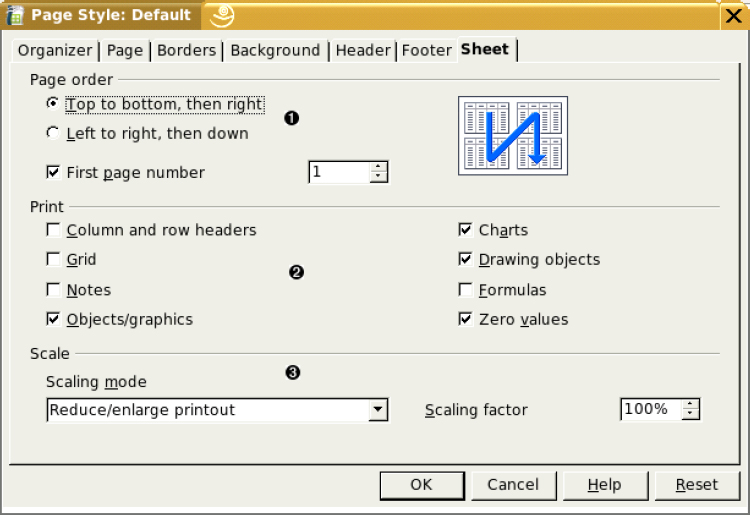Chapter 5. Spreadsheets
Surprisingly, we have already covered a great deal of the information about spreadsheets. Spreadsheets share a great deal of their markup with tables that you find in text documents. This shouldn't come as a surprise—a spreadsheet is just a two-dimensional table. It can have many blank rows and columns and can do calculations on the cell entries, but a spreadsheet is still just a table at heart.
However, there are things that make a spreadsheet, well, spreadsheetish. Most important, the <office:body> has an <office:spreadsheet> element as its child (rather than <office:text> for a word processing document). Other elements and attributes specific to spreadsheets are in the styles.xml file, but most are in content.xml.
Spreadsheet Information in styles.xml
The styles.xml file stores information that OpenOffice.org sets from the sheet tab of the Format Page dialog, shown in Figure 5.1, “Spreadsheet Page Options”. Specifically, this information is in the <style:page-layout-properties> element that is inside the first <style:page-layout> element within the <office:automatic-styles>.
Figure 5.1. Spreadsheet Page Options

- The style:print-page-order attribute has a value of ttb for top to bottom, and ltr for left to right. If the first page number is not one (the default), then the style:first-page-number attribute will give the number that you specify.
- The value ...
Get OASIS OpenDocument Essentials: Using OASIS OpenDocument XML now with the O’Reilly learning platform.
O’Reilly members experience books, live events, courses curated by job role, and more from O’Reilly and nearly 200 top publishers.

